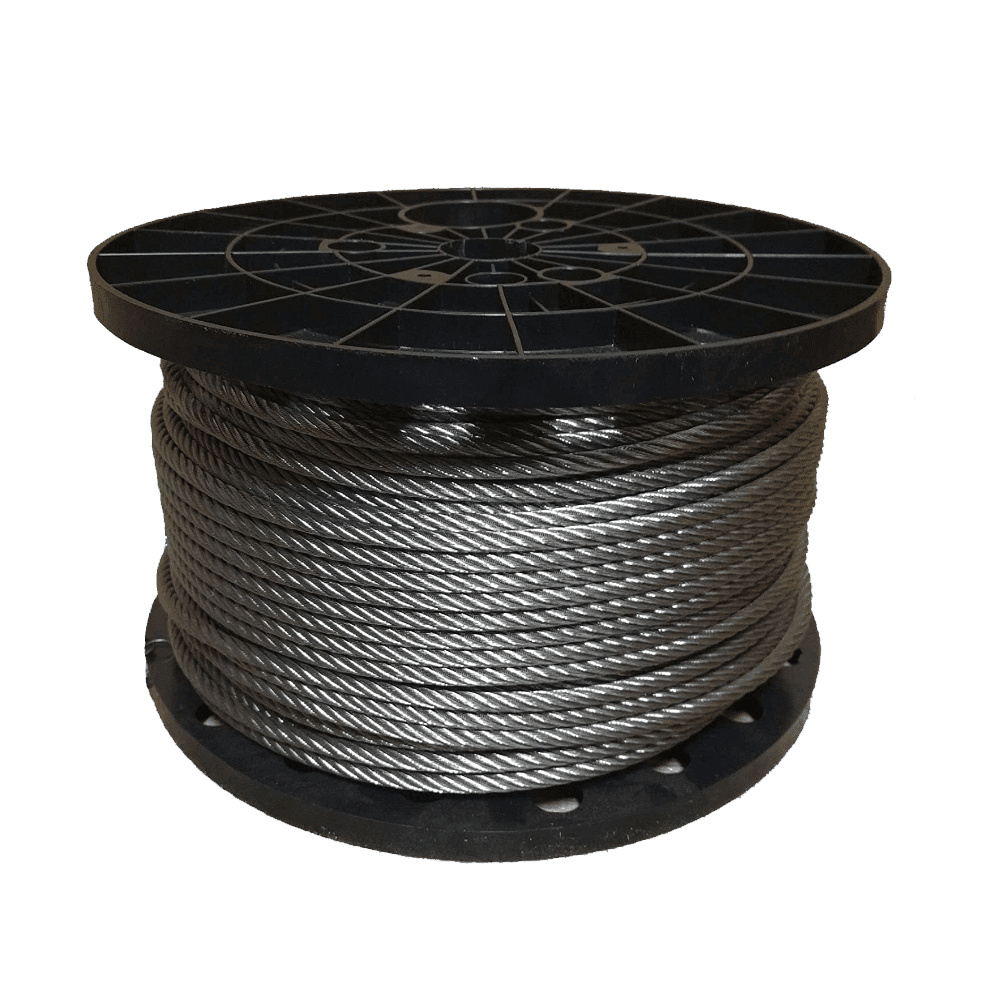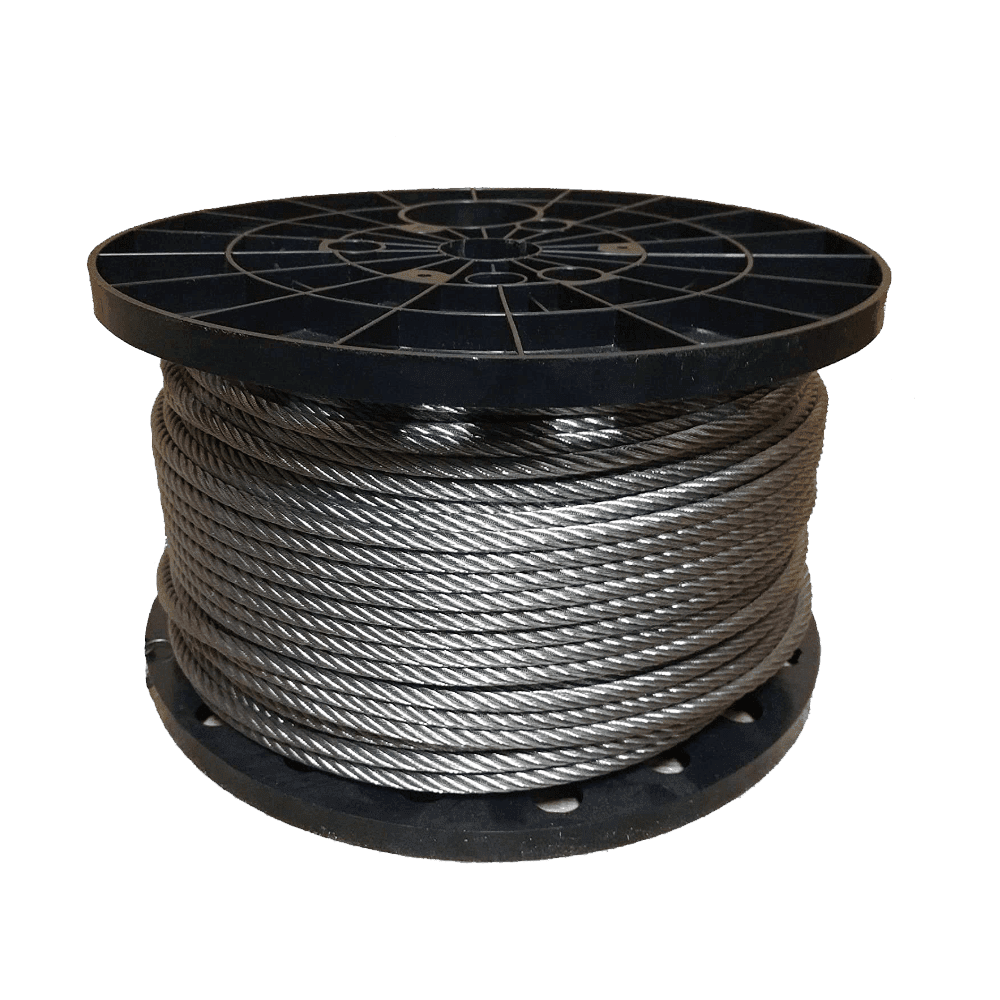Cable Spools
Steel Cable is a high-quality and durable cable designed specifically for boat lift applications. It is a 7 x 19-strand aircraft cable that offers exceptional flexibility and strength. This cable is custom cut to specific lengths, making it suitable for various boat lift configurations.
One of the key features of the 316 Stainless Steel Cable is its ability to retain ductility over long periods, even when running over sheaves. This means that the cable maintains its flexibility and performance, ensuring smooth and efficient operation of the boat lift system.
In addition to its flexibility, the 316 Stainless Steel Cable also offers moderate corrosion resistance. This makes it an ideal choice for saltwater applications where exposure to harsh conditions and corrosive elements is common. The cable’s resistance to corrosion helps prolong its lifespan and maintain its reliability in demanding marine environments.
When it comes to selecting the appropriate cable for boat lifts, BH-USA recommends the use of 7 x 19 aircraft cables. These cables provide the necessary flexibility and strength required for lifting boats. It is important to consider a minimum 5:1 safety factor when calculating the working loads of the cable. This ensures that the cable can safely support the weight of the boat and accounts for various factors that may affect its strength.
It is worth noting that compounding is required for boats weighing over 6,000 lbs. This means that additional measures or support should be taken to ensure the safe operation of the boat lift system. The recommendations provided by the ASME (American Society of Mechanical Engineers) for safety factors and rating systems apply to boat lifts as well as overhead cranes, ensuring compliance with industry standards.
When evaluating the strength of the cable, it is important not to rely solely on the “Breaking Strength” value. The breaking strength refers to the maximum force the cable can withstand under ideal conditions, without considering other factors that may compromise its strength. Instead, it is crucial to use the Safe Working Load (SWL) of the cable, which includes a safety factor to account for potential deterioration over time and other factors that may affect its strength.
For added assurance, BH-USA provides test certificates for all cables sold, which can be requested upon purchase. This ensures that the cable meets the necessary quality and performance standards.
It is important to note that while the 7 x 19 aircraft cable is suitable for boat lift applications, it is not recommended for use in aircraft controls or for lifting humans. The cable’s design and specifications are specifically tailored for boat lift operations.
In summary, the 316 Stainless Steel Cable is a reliable and versatile choice for boat lift applications. Its 7 x 19-strand construction provides flexibility and strength, while the stainless steel material offers moderate corrosion resistance. By following the recommended safety factors and utilizing the Safe Working Load, you can ensure the safe and efficient operation of your boat lift system.
Aircraft Cable
The diameter of aircraft cable is determined by multiplying the number of wires in each strand by the number of strands. “7 x 19” means that there are seven 7 strands with each strand having 19 wires. This technology provides the most flexibility in aircraft cables.
In boat lift applications, BH-USA recommends 7×19 aircraft cables. Consider at least a 5:1 safety factor when calculating working loads. For boat lifts, use a minimum of 4 drops. Test certificates for all cables sold by BH-USA are available upon request.
It is not recommended to use 7 x 19 aircraft cable for aircraft controls. 7 x 19 aircraft cable should never be used for lifting humans.
Safe Working Load Vs. Minimum Breaking Strength
When selecting wire rope, it is crucial to use the Safe Working Load (SWL) of the cable rather than the breaking strength. Breaking strength is just that, it’s the amount of force a newly woven wire rope can withstand under perfect conditions, where if you added one more pound, the rope would snap!
Why Aren’t We Using Breaking Strength?
Testing the breaking strength of wire rope was performed on a machine that isolates just the wire rope so that the end connections do not affect the breaking strength. As a system, wire ropes include the wire rope itself as well as the end connections that work together dynamically. Because they must bend around cables and sheaves, they can only be as strong as their weakest link. Minimum breaking strength refers to a wire rope’s maximum tension that it can sustain under ideal circumstances, without accounting for the other factors that compromise the system’s strength.
What Is The Reason Behind The Low Rating?
The Safe Working Load includes a safety factor (SF) for all the things that can happen to wire rope during its useful life which may reduce its breaking strength. ASME recommends a safety factor for this type of equipment. This is so that the lift can still safely support the load if at least one or more factors working to break the wire rope are present. Wire ropes deteriorate over time, lowering their breaking strength as they lose their safety factor.

